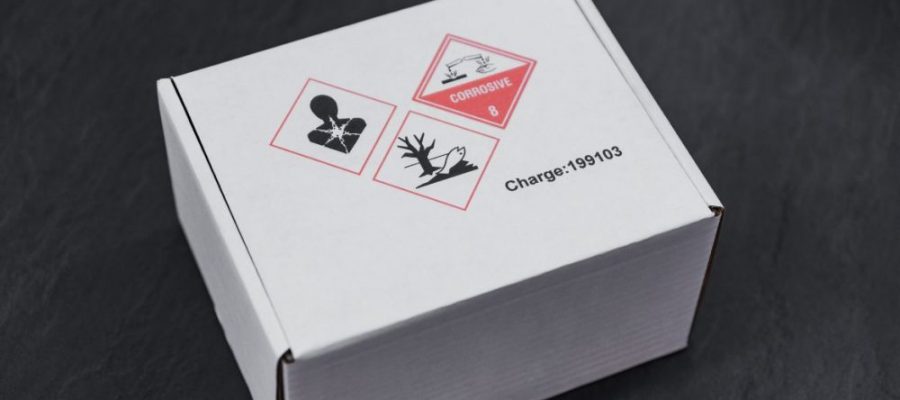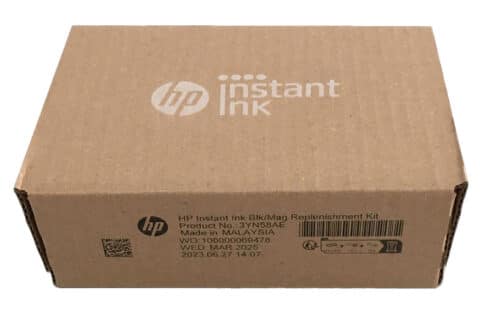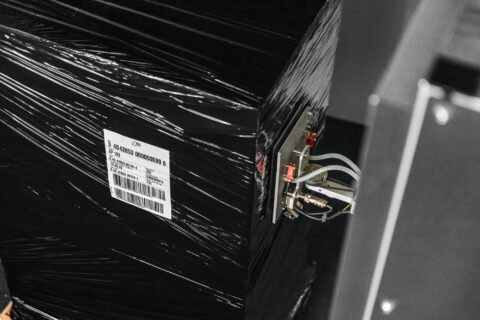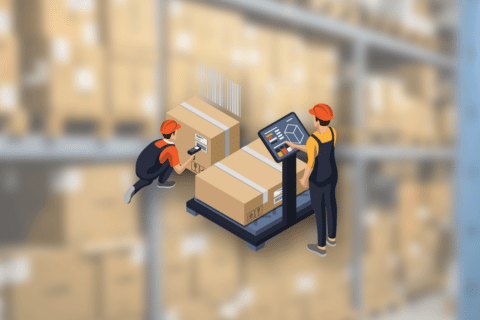Since the CLP Regulation (also known as Regulation EC n° 1272/2008 on classification, labeling and packaging) came into force, chemicals must be marked according to the Globally Harmonized System of classification and labeling of chemicals (GHS system).
Black-red hazardous substance symbols have replaced the previous orange hazard symbols. Additionally, there are signal words as well as so-called H-phrases (hazards) and P-phrases (precautions). In the near future, an EU-wide Unique Formula Identifier (UFI) will also have to be applied.

There are different ways to implement the hazard marking in conformity with GHS. A new interesting approach: printing the hazard symbols directly on the product instead of attaching a GHS label! This article will show you the advantages of this approach.
New inkjet printer for GHS marking
Weber Marking Systems has launched a new solution on the market that enables companies to mark their hazardous goods and chemicals in compliance with GHS in a simple and cost-effective manner: the piezo inkjet printer Markoprint integra PP 108 bicolor prints two colors with only one print head! This is made possible by the innovative SEIKO print head technology, which is exclusively available for Markoprint printers.

High-resolution graphics printing
Whether it is graphics (e.g. hazard symbols, logos), texts or numbers, the Markoprint integra PP 108 bicolor prints up to 108 mm high on absorbent packaging such as cardboard or paper bags. And this in high resolution and in up to 150 m/min at 360 dpi resolution.

The Markoprint integra PP 108 bicolor can be installed permanently or moved, depending on whether standing or passing products are to be marked. The print result is always of high quality. This is ensured by the recirculating ink system: it is vibration-resistant. At the same time, it prevents air from getting into the nozzles or ink from drying out. This makes the Markoprint integra PP 108 bicolor maintenance-free under normal environmental conditions.
Easy to install and control
In contrast to other inkjet printers, the Markoprint integra PP 108 bicolor allows the ink tank and print head to be installed at any level. This is ensured by the pump control and the automatic adjustment of the internal circulation pressure. The standard hose length is 1.50 m, but other lengths are available as an option so that the system can be easily integrated. The print data can be transferred via Ethernet, EIA232 or a USB stick.
With a stainless steel housing and protection class IP 40, the Markoprint integra PP 108 bicolor is optimally equipped for use in the chemical industry.
GHS printers in comparison: label printer vs. inkjet printer
In the chemical industry, it is common practice to implement the identification of hazardous substances with an attached label. There are alternatives such as direct marking using piezo inkjet printing technology, which can offer several advantages over the traditional label.
GHS labels

Many chemical companies mark their products with labels on which the red and black warning symbols and all other important information are printed. These can be pre-printed GHS labels or labels that are produced on demand with a two-color thermal transfer printer or label dispensers. Hazard symbols are printed in high resolution on the labels by both two-color thermal transfer printers and label dispensers with additional information. Label dispensers then even apply the finished GHS labels to the products in a fully automated way.
Advantages
GHS labels can be used in many ways for hazardous substance labeling. Whether it is sacks, cartons, an IBC container, bottles or a barrel – no matter what shape or material – there is a suitable labeling system for every packaging. The labeling position can vary, from double-sided labeling to corner labeling.
Disadvantages
Labeling solutions are usually relatively cost-intensive. In addition to the purchase costs of the system, there are additional costs for consumables such as labels and ink ribbons. Handling is also made more difficult because ribbons and label rolls have to be changed or replenished. In addition, changing or replenishing consumables leads to downtimes. In the worst case scenario, labels can peel off, which would be fatal in the case of hazardous material labels.
In addition to the points mentioned above, there are further disadvantages, especially with pre-printed GHS labels: separate hazardous substance labels must be stored for each individual product. And if the requirements change, it becomes impossible to react quickly and flexibly.
GHS prints with inkjet printer

Until now, it has not been possible to produce high-resolution two-color prints with a large character printer using piezo inkjet technology; and what’s more, with only one print head. But now, the new Markoprint integra PP 108 bicolor inkjet printer opens up new possibilities. This inkjet printer is capable of producing two-color, high-resolution print images with only one print head. This makes the system suitable for hazardous substance labeling on absorbent packaging surfaces – and can replace expensive hazardous substance labels.
Advantages
Inkjet printing is significantly cheaper than traditional labels: the savings compared to a GHS label with the same print content are well over 50%. In addition to this, inkjet printing offers further advantages over a label. For example, ink can be refilled during an operation. On the other hand, the prints can be flexibly adapted at any time if the information to be applied changes (e.g. in the course of a product change). Another advantage offered by inkjet printing with the Markoprint integra PP 108 bicolor is that it is maintenance-free. Finally, inkjet printers are much more space-saving than labeling systems. Compared to a labeling solution, there is also much less waste.
Disadvantages
Currently, there are no inks for smooth surfaces available for the Markoprint integra PP 108 bicolor, which means piezo inkjet printing can only be used on absorbent materials. There is also less flexibility in the position of the marking. Therefore, the inkjet printer is not as flexible as a labeling system. On the other hand, the product must be located relatively close to the print head.
GHS labels or GHS printing with inkjet?
| GHS labels | GHS printing with inkjet (with the Markoprint integra PP 108 bicolor) | |
| Packaging forms | Suitable for cartons, bags, IBC containers, bottles, drums | Suitable for cartons and bags |
| Backgrounds | Absorbent and non-absorbent | Absorbent |
| Costs | More expensive | Cheaper |
| Print resolution | High resolution, up to 600 dpi | High resolution, 180 dpi per color
|
| Consumables | Ribbons and labels | Inks |
| Maintenance | Yes | No |
Conclusion
Anyone who has to mark absorbent packaging such as cartons or paper bags with hazardous material symbols should definitely check whether they can solve this problem with a piezo inkjet printer such as the Markoprint integra PP 108. It can certainly be worthwhile!
Get in touch with our experts

















